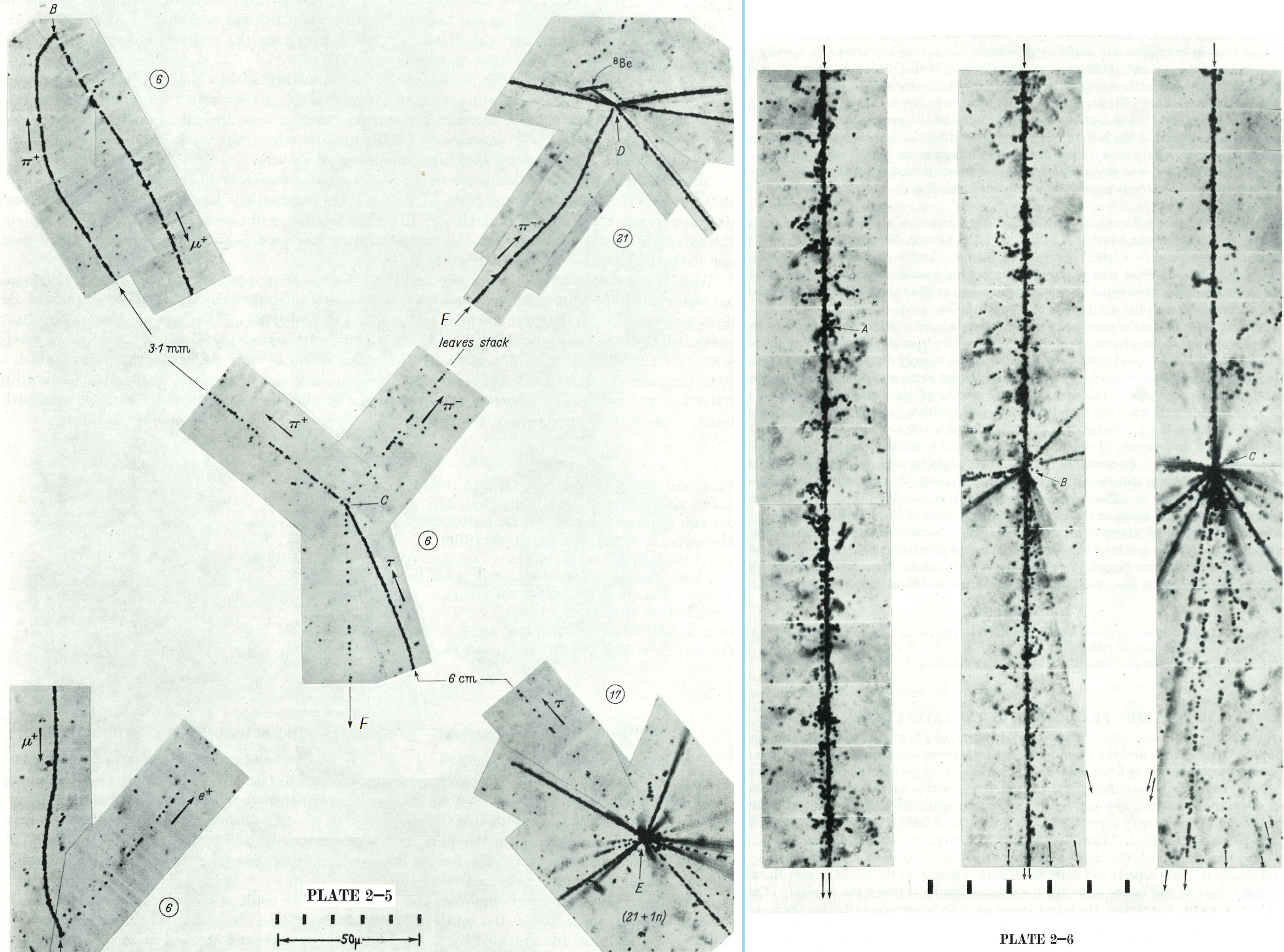Example of Kaons and pions interaction in nuclear photographic emulsions
Plate 2-5 : The observations were made in a stack of 46 emulsions each 15×15 cm exposed at high altitude over Southern England. The number in the stack, of the plate in which a particular event occurred, is shown ringed. The first observation was of the decay at ‘A’ of a muon μ into an electron. On following back the muon, it was found to have been produced by the decay of a pion π at ‘B’ in the same plate (n°6). On following back the pion in turn, it was found to have originated in the decay of a kaon (designed here by ‘τ’) at point ‘C’, also in the plate 2-6.
Of the other two pions formed by the decay of the kaon τ, one was followed over a path length of 21 mm to its arrest, at point ‘D’ in plate 21, where it produced a nuclear disintegration from an Oxygen nucleus in the emulsion. Among the secondary products of this disintegration there were four singly charged particles and a 8Li3 nucleus. The latter, on reaching the end of its range, suffered β-decay with the formation of a 8Be4 nucleus in an excited state. This nucleus then disintegrated spontaneously into two α particles. The resulting ‘hammer’ tracks are due to the α particles which recoiled from one another with equal and opposite momenta.
The third pion produced at C going to the upper right hand corner left the stack after a path of 7,6 mm. On following back the track of the kaon τ, it was found to have originated in a nuclear disintegration at the point ‘E’ plate 17. The 21 other secondary particles from this disintegration were followed to the end of their range in the stack, but none of them showed any remarkable features.
